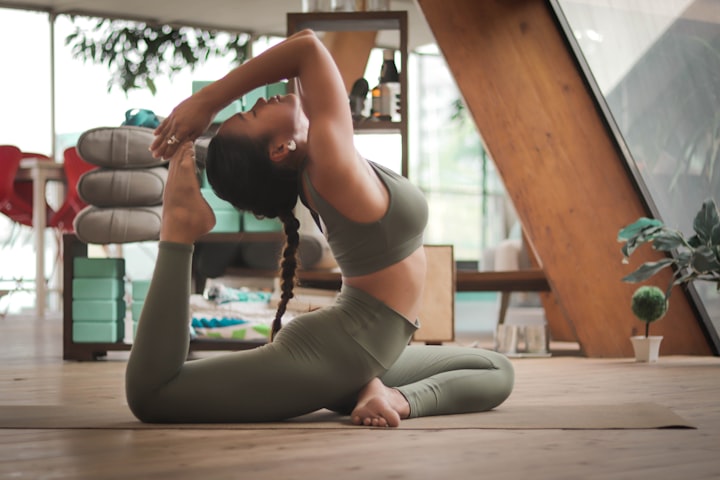5 Yoga Asanas You Should Do This Monsoon to Boost Your Immunity
Yoga and nutrition expert Garima Goyal recommends doing a workout session of 60 minutes a day to help you stay active and fit during the season.

Monsoon brings with it a host of air-borne and water-borne diseases. The sudden change in weather, drop in humidity, water logging and mosquito breeding cause infections and diseases. One’s immune system is tested through the entire season.Also Read - Health Benefits Of Pineapple: Reasons Why You Should Add Pineapple In Your Diet - Watch Video
And it doesn’t stop there. There is always the possibility of contracting cholera, dengue fever, or other distressing ailments. So, how can one enjoy the monsoons as they should be while being safe and healthy? Good eating habits, exercise, and adequate rest are a few factors that can keep you safe during the rainy season. Also Read - Benefits Of Makhana: Top 5 Reasons Why You Must Add Makhana/Fox Nuts In Your Diet - Watch Video
It doesn’t end there. There is always the risk of contracting cholera, dengue fever, or other dreadful diseases. So, how can one truly enjoy the monsoons while remaining safe and healthy? Yoga and nutrition expert Garima Goyal recommends doing a workout session of 60 minutes a day to help you stay active and fit during the season. Garima further shares simple yoga exercises to help build strength, agility, meditation, relaxation, and focus. Also Read - New to Zumba? 5 Things to Know Before You Kick-Start Your Fitness Journey
Padangusthasana (Big Toe): Padangusthasana is a foundational asana in Ashtanga Yoga. It is a basic standing position that incorporates forward bending. The asana is classified as beginning due to its easiness. Padangusthasana stretches every muscle in the body from head to toe. It relaxes the body and soothes discomfort. It is beneficial for flat feet, among other things. Padangusthasana is an excellent place to begin your yoga experience.
Trikonasana (Triangle Pose): Trikonasana is derived from the Sanskrit terms ‘Trikona’ (three corners) and ‘Asana’ (posture). In trikonasana yoga, the practitioner spreads their legs apart without bending their knees, with their hands extended apart, producing a 90-degree angle between the upper and lower bodies. Trikonasana yoga, also known as Triangle position exercise, is a standing posture that improves strength, balance, and flexibility. There are several variants in the trikonasana stages or processes. In general, it is divided into three types: Baddha Trikonasana, Parivrtta Trikonasana, and Utthita Trikonasana.
Utkatasana (Chair Pose): Chair posture, also known as “awkward chair pose” and “fierce stance” in Sanskrit, is a form of asana or yoga practice. Begin in a standing stance and bend your knees to lower your body as if you were sitting in an imaginary chair. This standing forward bend is part of the Vinyasa or Ashtanga yoga Sun Salutation routine. Chair posture strengthens your legs, upper back, and shoulders while also improving balance and flexibility. The chair position is a standing yoga practice that works the core. This strong stance may help you strengthen your legs, back, and shoulders.
Bhujangasana (Cobra Post): Bhujangasana is derived from the words bhujanga (cobra or snake) and asana (position). Cobra Stretch is another name for Bhujangasana. Suryanamaskar (Sun Salutations Position) and Padma Sadhana incorporate this pose. Do you wish to tone your stomach but lack the time to go to the gym? Are you exhausted or anxious as a result of an excessive workload? Bhujangasana, also known as Cobra Stretch, is a great way to cure these and other issues while sitting (or lying down) at home! Bhujangasana, also known as the Cobra Pose, is performed while laying on your stomach. It stretches your body (particularly your back) and rapidly melts your tension away!
Vrikshasana (Tree Pose): Vrksasana is a Sanskrit noun that combines the terms Vriksha and Asana. The Sanskrit term for a tree is Vriksha, whereas the Sanskrit word for posture is Asana. As a result, this is known in English as Tree Pose. Vrikshasana is a standing fundamental yoga position. Furthermore, in Hinduism, Sages utilised this stance as a form of austerity or Tapasya. In a seventh-century CE rock temple in Mallapuram, a man performs a position akin to Vrikshasana. As a result, this is an old yoga stance.
Shishuasana (Child Pose): A child’s pose, also known as balasana/shishuasana, is a beginner’s position that aids in the relaxation of the mind and body. Balasana is derived from the Sanskrit words Bala, which means “young and childlike,” and asana, which means “seat or sat pose.” It is a vital resting posture that helps to quiet your senses. It is a fundamental yoga stance that teaches us that inactivity may be as helpful as action and doing. It’s a chance to take a breather, assess your circumstances, and prepare to move on.
Tadasana (Mountain Pose): While Tadasana is one of the most fundamental yoga asanas, it is a challenge for all levels and delivers various physical and emotional advantages. Tadasana calms your body and mind, promoting inner tranquility. Maintaining alignment and body awareness is an ongoing effort. Standing firm, stable, and focused in Mountain Pose helps to improve posture, alignment, and balance. This can help with other yoga positions as well as your regular activities. Keep your practice new by always thinking of ways to change the stance.






Comments
There are no comments for this story
Be the first to respond and start the conversation.